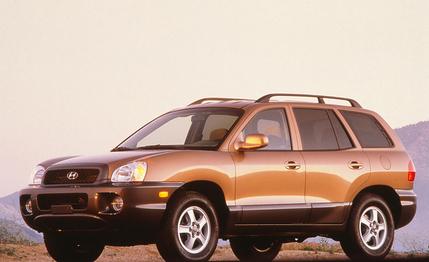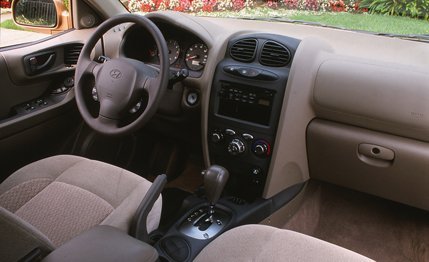
 First Drive Review
First Drive Review


Hyundai is the Marv Albert of the auto industry -- it's gone from success to oblivion to success in the 14 years it's been doing business in the U.S. In 1986, the South Korean company sold 166,882 cars, a record for a new brand, and sales zoomed to 264,282 by 1988. Then its troubles began. Hyundai's first car, the Excel, did everything but, as engines blew, bodies rusted, and air conditioners didn't. Sales tumbled, and Hyundai became a synonym for shoddy.
Since then, it's been a hard slog to get back on track. Hyundai scuttled the Excel and gradually expanded its car line with less troublesome models and, to allay buyer fears, offered one of the industry's longest powertrain warranties, 10 years or 100,000 miles.
Hyundai's strategy worked. "We are on track to reach our goal of 220,000 units sold in 2000," says Robert Cosmai, vice-president of sales for Hyundai Motor America. "For the first six months of the year, Hyundai sales are up 74 percent over last year's."
Still, with just four vehicles -- the subcompact Accent, the compact Elantra, the three-door Tiburon, and the mid-size Sonata -- Hyundai's menu was mostly burgers and fries. In 2001, with the introduction of its new sport-utility vehicle, the Santa Fe, Hyundai hopes to add a Big Mac. "There's no doubt about it, it really does take the franchise in a new direction," says Finbarr O'Neill, president and CEO of Hyundai's U.S. unit.
Hyundai cooked up the Santa Fe specifically for American tastes. "This product was designed by our California design studio," O'Neill says. "Its directive was to come up with a design that had originated in North America as opposed to having either a European or Korean concept of what North Americans would like."
The result is a mainline SUV that, O'Neill says, "is a little to the right of the Toyota RAV4s and Honda CR-Vs and a little to the left of the Ford Explorers." Like the RAV4, the CR-V, and an increasing number of SUVs, the Santa Fe's underpinnings come from a car, a "heavily revised" Sonata platform. This puts it into the "crossover" category of SUVs, an increasingly popular subgenre that makes no pretension to heavy-duty off-roading but is more of a tall station wagon with an SUV look.


In size, the Santa Fe slots between a Suzuki Vitara and Ford Explorer and occupies nearly the same amount of real estate as the CR-V and the new Ford Escape, although it's wider than both, giving it a slight interior-room advantage. But it's considerably heavier than most of its competition, with a well-equipped version scaling in at more than 3700 pounds, almost 500 more than the CR-V.
In styling, the Santa Fe puts a lot of distance between itself and its crossover classmates. Hyundai took the defining two-box profile of an SUV and rounded it and sculpted it into a shape that won't get lost in a parking lot. From the cowl forward, the Santa Fe is more sports sedan than sport-ute, with a snouty grille and bubble fenders that give it a snarly look. Hyundai avoided the characteristic slab-sided, squared-off shape of most SUVs by molding a subtle concave curve along the body side and giving the rear hatch a sharper slope. It's a cool look that drew "Hey, what's that?" comments from a number of observers during an afternoon on roads around San Diego.
Had they peered inside, onlookers would have been equally intrigued. The wraparound dashboard is curvy and swoopy, avoiding the flat-panel, pickup-truck look of many other SUVs. The controls are well located. The instruments are large and simply rendered, and the central pod with its radio and climate controls presents no mysteries. The Santa Fe's seats are as comfortable as anything else in the class, and there's a sufficient allotment of storage spaces, cup holders, and power points.